


THE SIX WIVES OF HENRY VIII (H8)
xxxxxCatherine of Aragon (1485-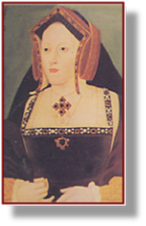 youngest daughter of Ferdinand V and Isabella I, king and queen of Aragon and Castile, was married to Henry’s older brother Arthur in 1501 as a means of making a firm alliance with the powerful state of Spain. Arthur died the following year, however, and Henry VII then arranged for his second son, Henry, then aged 12, to marry Catherine and keep the alliance in place. A papal dispensation was obtained for this marriage, and when Henry came to the throne in April 1509 he married Catherine of Aragon two months later. The marriage appears to have been quite a happy one. She bore Henry six children but only one of them, a girl named Mary (the future Queen Mary I), survived.
youngest daughter of Ferdinand V and Isabella I, king and queen of Aragon and Castile, was married to Henry’s older brother Arthur in 1501 as a means of making a firm alliance with the powerful state of Spain. Arthur died the following year, however, and Henry VII then arranged for his second son, Henry, then aged 12, to marry Catherine and keep the alliance in place. A papal dispensation was obtained for this marriage, and when Henry came to the throne in April 1509 he married Catherine of Aragon two months later. The marriage appears to have been quite a happy one. She bore Henry six children but only one of them, a girl named Mary (the future Queen Mary I), survived.
xxxxxBecause of her failure to bear a son, in 1527 Henry sought a divorce on the grounds that his marriage was not valid, he having married his brother’s widow. This decision triggered off the English Reformation. The pope, Clement VII, finding it difficult to annul a marriage he had earlier allowed and, more to the point, very much under the thumb of the Emperor Charles V, Catherine’s nephew, dragged his feet for some seven years! Henry then took the matter into his own hands and via his Archbishop Thomas Cranmer, and his first minister, Thomas Cromwell, pronounced his own divorce. In 1534 the pope finally declared against the divorce, and in the same year Henry was made head of an English independent church. The break with Rome was complete. As for Catherine, she would not leave the country and bravely refused to sign away her own rights and those of her daughter Mary, now declared illegitimate and thus no longer heir to the throne. When the king married Catherine Howard in 1540, however, Mary was allowed to return to Court and in 1544, though still regarded as illegitimate, was made successor to Edward VI.
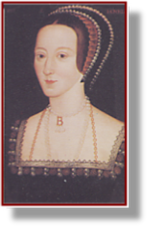
xxxxxHenry’s second wife, Anne Boleyn (c1507-
xxxxxThree years later, however, Anne fell from grace. She was charged with adultery and incest and imprisoned in the Tower of London. On being found guilty, she, her brother Lord Rochford, and four other men were executed. One of the men, a court musician, was hanged; the others were beheaded. Whether Anne was guilty of these charges cannot be substantiated, no records of the trials having survived, but it is known that Henry was anxious to marry Jane Seymour. She had refused to be his mistress and this doubtless had a bearing on Anne Boleyn’s fate, justified or not.
xxxxxIncidentally, every 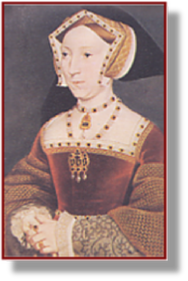 year on the anniversary of Anne’s execution, a bowl containing red roses is delivered to the Tower of London -
year on the anniversary of Anne’s execution, a bowl containing red roses is delivered to the Tower of London -
xxxxxJane Seymour (c1509-
xxxxxHenry’s marriage to 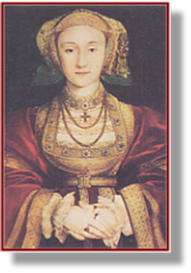 Anne of Cleves (1511-
Anne of Cleves (1511-
xxxxxHenry divorced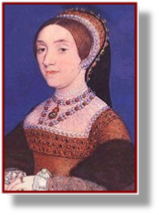 Anne of Cleves on the 9th of July 1540 and married Catherine Howard (c1520-
Anne of Cleves on the 9th of July 1540 and married Catherine Howard (c1520-
xxxxxHenry’s sixth and last wife, 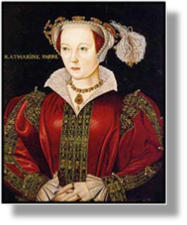 Catherine Parr (1512-
Catherine Parr (1512-
Catherine of Aragon 1509-
Anne Boleyn 1533-
Jane Seymour 1536-
Anne of Cleves 1540
Catherine Howard 1540-
Catherine Parr 1543-




Acknowledgements
Catherine of Aragon: c1530, artist unknown – National Portrait Gallery, London. Anne Boleyn: c1533-
H8-